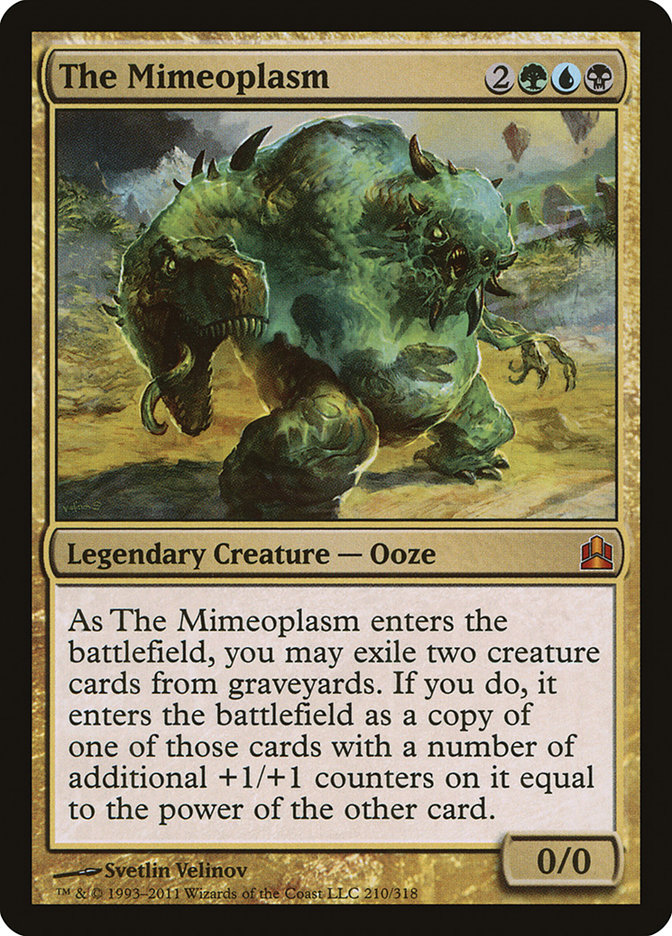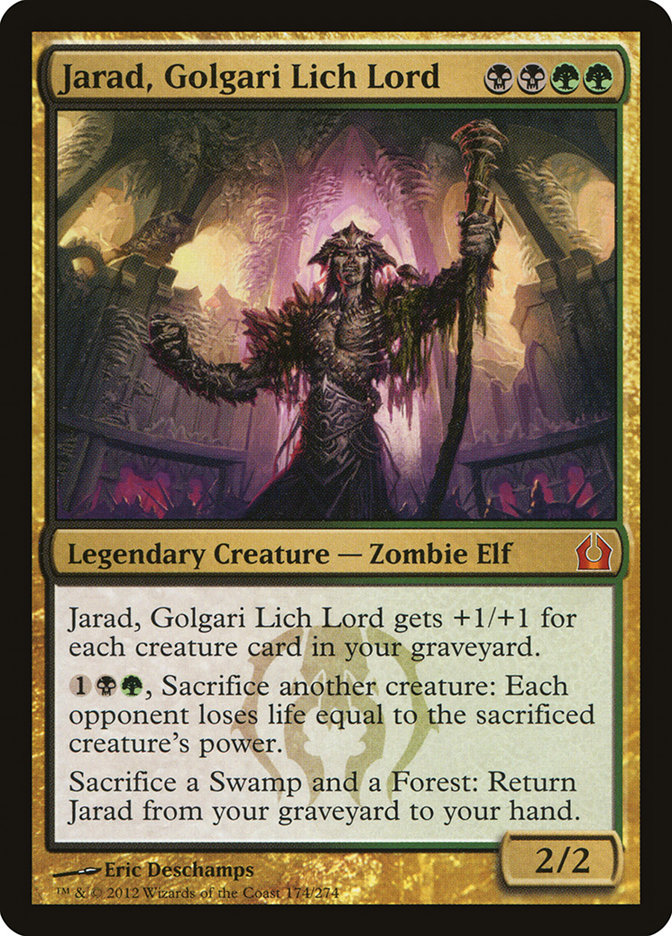Perhaps Grand Prix Atlanta is not far from your home and you’re thinking about going. MaybeBattle for Zendikar Sealed isn’t your cup of tea and you’re looking at what else is available outside of the main event. How about theCommander Celebration that’s going on concurrently to kick off the release of the Commander 2015 product? Maybe… but maybe you’ve never tried Commander before.
Then this article is for you!
Why Commander?
Commander is a fun, casual Magic format where multiple friends – old or new – can play together and have a rip-roaring good time. Unlike the competitive
formats you may be used to, Commander encourages longer and more interactive games, often featuring splashy spells that you won’t see in more streamlined,
competitive decks. In Commander, the ultimate goal is for everyone to have fun, regardless of the outcome. In fact, it’s often the crazy haymaker play
someone pulls off with an obscure card no one has heard of that will be remembered more than who is the last person standing.
The other nifty thing is that you play with a 100-card deck and you can only play a single copy of any card except for basic lands. This generally ensures
that you’re going to see different cards each time you play your deck. It also means that when you open a really sweet card in a booster pack or pick one
up in trade, you will only need that single copy to play in Commander.
Pick a Legendary Creature that Looks Cool
The first step in building your Commander deck is to pick a legendary creature that looks cool to you. Ever since Legends, Wizards of the Coast
has printed hundreds of flavorful and fun legendary creatures, so find one that speaks to you. When you look at the card, it should whisper in your ear
“Wouldn’t it be cool if…” and get your gears turning for all sorts of fun plays you can pull off with it. This card will be called your commander, and you
get to start each game with that card in your command zone.
What Is the Command Zone?
The command zone is the place where your commander hangs out, waiting for you to be able to cast it. You can cast your commander for its normal mana cost
from the command zone whenever you could cast a creature spell from your hand. For example, Kaalia of the Vast would cost a white, a black, a red, and a
colorless the first time you cast if from the command zone. Whenever your commander would be put into any zone from play – if it’s killed and would be put
into the graveyard, if it would be exiled, if it would be put back into your hand, or shuffled into your library – you can choose to put it back into the
command zone instead. Each time this happens, it costs an additional two colorless mana more to cast from the command zone again, so be careful with your
commander! For example, if Kaalia of the Vast is destroyed after the first time you cast her, the next time you go to do so, she will cost a white mana,
black mana, red mana, and three colorless for her second casting.
Make Note of Your Commander’s Color Identity
A card’s Color Identity is determined by the colors in its casting cost and any colored mana symbols in its rules text. However, this does not include any
colored mana symbols found in reminder text! For example, Pontiff of Blight’s color identity is only black despite the presence of the black/white hybrid
mana symbol in the reminder text.
When you build the rest of your deck, you can only play with colorless spells or spells that fall within the same color identity of your commander. For
example, if Jarad, Golgari Lich Lord is your commander, you can play black spells (including Pontiff of Blight), green spells, black and green spells, and
colorless spells, such as artifacts or Eldrazi.
Note that spells with devoid still have color identity based on their mana cost and any mana symbol that appears in its rules text.
Commander Banned List
The Commander format is tended to by a Rules Committee who does their best to ensure the format is fun and diverse. You can find the rules here. As of September 20th, 2015 here is the banned list section, so be sure not to use any of these cards
in your deck:
|
Commander Banned List |
||
|---|---|---|
Commander is played with Vintage-legal cards. Cards are legal to play with as of their set’s Prerelease.
The following is the official banned list for Commander games. These cards (and others like them) should not be played without prior agreement from the
other players in the game.
Duel Commander Banned List
Note that the Commander Celebration includes events using the Duel Commander format. This format is a more competitive variant of
Commander built for just two-person duels, similar to regular, tournament Magic.
Duel Commander follows the exact same rules as classic multiplayer Commander, except for the following:
- Players start the game with 30 life.
- New cards are legal on release day (Friday following the Prerelease).
There is also a banlist that is exclusive to Duel Commander:
|
Commander Banned List |
||
|---|---|---|
|
Sensei’s Divining Top |
||
|
Mishra’s Workshop |
||
|
Ante cards are also banned. |
||
|
The following cards are also banned from being played as a commander: |
||
This banned list is current as of October 2015. For more about Duel Commander, be sure to check out their website here.
You’ve Got Your Commander and 99 Other Cards. Now What?
Get a couple friends together and play! Each player starts the game with 40 life (or 30 life if playing Duel Commander). Accumulating 10 poison counters
will still result in your defeat. Also, if a player has been dealt 21 points of combat damage by a particular commander during the game, that player loses
the game. This can be from one attack, or cumulative throughout the course of a game.
How about resolving mulligans? In general, each player gets a “Big Deck Mulligan” – if you don’t like your opening hand, you can shuffle it back in and
draw another opening seven. After that, if you don’t have a playable hand, you can either resolve mulligans as you normally would in tournament Magic (i.e.
the Vancouver Mulligan), or you can use the “Partial Paris Mulligan.” Because Commander games are long and usually not played in multigame matches, the
format uses this modified mulligan rule designed to alleviate mana-light hands without significantly increasing the odds of finding individual cards. This
is how it goes:
1) In turn order, players may exile (face down) some or all of the cards in their hand.
2) Each player then draws one less card from their deck than the number they exiled.
3) Players who exiled at least one card may return to step 1 and repeat the process, drawing one less card each time.
4) Players shuffle all exiled cards into their deck.
There is no play-or-draw rule, so whoever goes first still gets to draw a card during their draw step.
Now go have some fun!
How Can I Learn More?
Give the format a try, and if you enjoy it, there are a ton of great resources out there to read more about the format. Be sure to keep up on the official
rules (either here or here), and you can find a ton of great
Commander content right here on StarCityGames.com.
Also, I wrote a book on the format called The Complete Commander, designed to bring you up to speed on the format in no time flat. If you purchase
a Commander Celebration Experience for Grand Prix Atlanta, you get a free electronic copy of the book on a sweet USB drive. It’s also for sale as an eBook here at StarCityGames.com. I’ve been updating the book once a year to
accommodate any rule changes and the new set releases, including the new Commander product that comes out, and once you’ve bought a copy of the book you
can get the update for free.
If you have any more questions, feel free to ask and I will answer the best I can, and I will see you all at Grand Prix Atlanta!
Previous Grand Prix Atlanta Blogs:
Countdown to Grand Prix Atlanta: 8 Days Out – Special Guests and Events!
Countdown to Grand Prix Atlanta: 9 Days Out – Upgrading Your Experience!
Countdown to Grand Prix Atlanta: 10 Days Out – Choosing Your Experience!
Countdown to Grand Prix Atlanta: 11 Days Out – Grand Prix Atlanta Overview!






